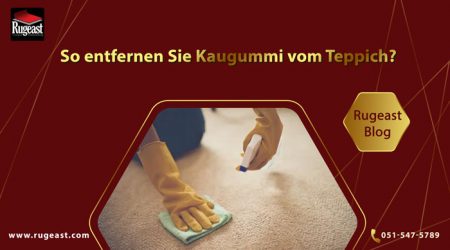What are the health benefits of a dirty carpet?
Everything about dirty carpets
Carpets and runners are popular flooring choices. They create a unique coziness and warmth in the home; however, carpets also harbor many hidden dangers for people. Every carpet easily collects dust and dirt. Even with daily cleaning, the following impurities accumulate in the carpet over time:
Bacteria
Fungi
Mold
Dust
Carpets harbor dust particles, bacteria, and dust mites, which are potential allergens. They can cause the following diseases:
Allergy in the form of hives
Asthma
Rhinitis
Sinus inflammation
Contact dermatitis
Digestive problems
Cough
Children are more susceptible to various illnesses. When playing, they have direct contact with the carpet and touch it with their hands. Additionally, they casually rub their eyes, eat, and sleep on the carpet. Don’t worry, we’ve tried to uncover all the secrets in this article that prevent the carpet from getting dirty. So, if you’re concerned about the health effects of a dirty carpet and are aware of how important caution is, don’t miss the next section.
*Read on: Everything you need to know about kids carpets

What dangers does a dirty carpet pose to human health?
Carpets and flooring provide warmth and coziness in the home. However, they also require proper maintenance. Cleaning alone is not sufficient to remove dirt and dust from the carpet. Over time, your carpet becomes a hospitable home to many unpleasant contaminants.
Studies have shown that homes with carpets contain 15 times fewer allergens in the air than other homes. This is because the carpet acts as a filter in the house. It traps pollutants in the air, creating a healthier indoor environment. Like all filters, carpets should be regularly cleaned. Otherwise, they can serve as reservoirs for bacteria, allergens, and mold.
The best way to keep an Oriental carpet and other carpets clean is to vacuum them twice a week. Additionally, have the carpet professionally cleaned once a year. We don’t want to scare you, but below are just a few examples of diseases caused by carpet contamination:
Norovirus
The Norwalk virus, also known as norovirus, can survive on carpets for four to six weeks. This virus causes stomach flu and other digestive problems. Additionally, this virus can be released into the air every time you walk over the carpet. Norovirus is a particular problem in areas with a lot of dust. Regular vacuuming can reduce the lifespan and spread of norovirus.
Salmonella
Salmonella is a pathogenic bacterium that typically causes diarrhea, fever, and abdominal cramps 12 to 72 hours after infection. This illness can last four to seven days. Naturally, it can be more severe in young children and older adults. Salmonella can easily be tracked into the home via shoe soles. Pets also increase the risk of salmonella on the carpet. Keep your carpet clean and dry to kill salmonella.
Kawasaki Syndrome
Kawasaki syndrome is a rare disease caused by bacteria and chemical toxins in carpets. This illness can lead to physical disabilities and even death. Naturally, regular vacuuming can reduce the risk.
Campylobacter
These bacteria are mainly found on wet carpets during winter months. They can cause campylobacteriosis, which is deadly for people with weakened immune systems. Campylobacteriosis, traveling through the bloodstream, can cause bloody diarrhea, muscle cramps, abdominal pain, and fever. Keeping the carpet clean and dry is sufficient to kill these bacteria. Professional carpet cleaning not only ensures that your home stays clean and healthy but also ensures that your carpet always looks good.
It also significantly improves its lifespan and ultimately saves you money.
Dust
Carpets, especially those with long piles, collect a lot of dust. Dust mites thrive in such environments. These microscopic parasites feed on dead human skin sitting in carpets. These creatures produce waste throughout their lives, which is 200 times their weight. These toxic waste products enter the air we breathe.
They cause sneezing, coughing, dizziness, and other allergic reactions, which are especially dangerous for children.
Mold
Another very unpleasant and dangerous resident of the carpet is mold. Mold thrives in rooms with high humidity. Mold has an unpleasant smell. Many spores enter the air and are scattered throughout the home. Additionally, their respiration is dangerous for health and weakens the immune system, so you must get rid of them immediately.
Pathogenic Bacteria
Even with regular vacuuming, a variety of pathogenic bacteria live in carpets. These bacteria include various types, from E. coli and Staphylococcus aureus to pneumonia-causing pathogens. Unfortunately, it is almost impossible to completely disinfect the carpet at home. It simply cannot penetrate deep enough into the carpet to kill all bacteria. To never have such problems, it is recommended to take your carpets to cleaning once a year.
Only professional products can penetrate deep into the carpet. Professional products clean the carpet of dust, dirt, mold spores, eggs, and insect larvae.
*Read on: Everything you need to know about modern carpets

Solutions to Prevent Carpet from Getting Dirty
We often attribute headaches, lethargy, and weakness to strenuous work or lack of sleep. In fact, their cause could be the air quality at the workplace or in the carpeted apartment. Ecologists have found that the air in a carpeted apartment is 4-6 times dirtier and 8-10 times more toxic than outdoor air. You might be wondering now, how do you clean the carpet and subsequently the air in the apartment? There are several ways to do this, including:
Prevention and Maintenance
It’s better to take precautions. Place mats at the entrance to catch dirt, preventing street grime from spreading onto your carpet.
Regular Vacuuming
To keep your carpet looking good for a long time, we recommend vacuuming at least twice a week. For low-pile carpets, it’s better to use a vacuum cleaner with rotating soft brushes. These vacuum cleaners are a bit more expensive, but their cleaning is much more efficient.
Thorough Cleaning
If you vacuum regularly and remove stains, a thorough cleaning may not be necessary for a year or more. If you decide to clean the carpet yourself, use a high-quality cleaner.
Wet Shampoo
Use a neutral shampoo for wool carpets. Avoid alkaline substances, household cleaners, or shampoos with an ammonia odor.
Absorbent Powder
There are several cleaning powders saturated with solvents or detergents. Read the manufacturer’s instructions carefully. After vacuuming the carpet, spread and rub this powder into the pile and vacuum again. Using powder is the easiest way to clean the carpet. Additionally, the powder does less damage to the pile since the carpet hardly gets wet. Also, the carpet is quickly walkable with this method.
Cleaning Foam
The foam is usually sprayed in a small amount, and the dirt is removed with a damp sponge or brush. After the carpet is dry, clean it with a vacuum cleaner.
Removing Pollutants with Wet Cleaner
In this process, the pile of the carpet is cleaned with a hot water jet under pressure and a cleaning solution. This method is especially suitable for cleaning heavily soiled carpets. This method can also be used to remove excess detergent after wet shampooing. When these two methods are used together, they can even clean a very dirty carpet. Such a device can be rented, but it’s better to leave this procedure to professionals.

Conclusion
Our carpets in rugeast are not only an important part of the interior, but also the primary dust collector in the house. More than 90% of carpet dirt comes from shoes. As mentioned, Therefore, before starting treatment for any illness, it’s essential to consider the possible cause of the illness, namely, a dirty carpet.











